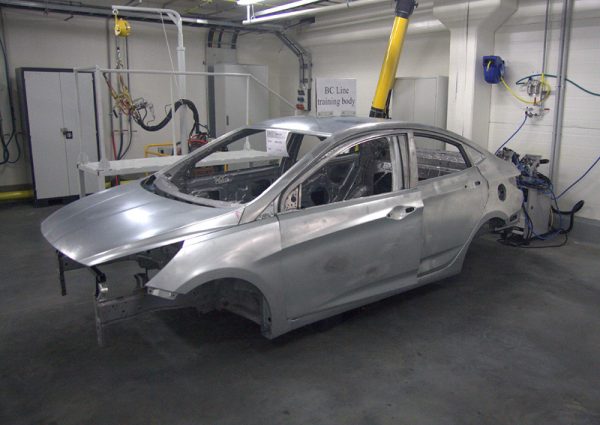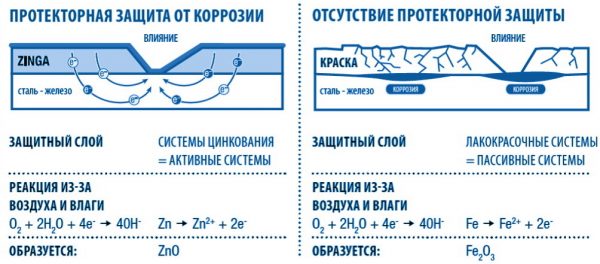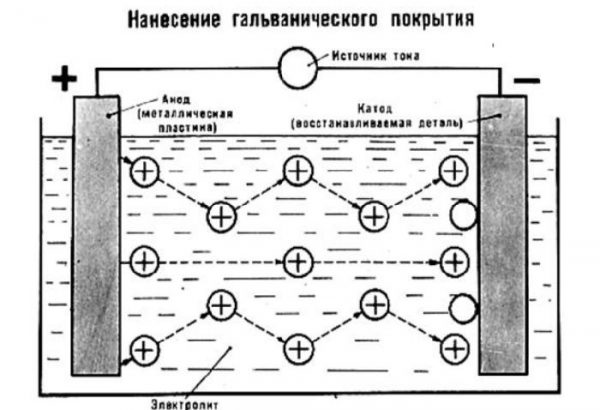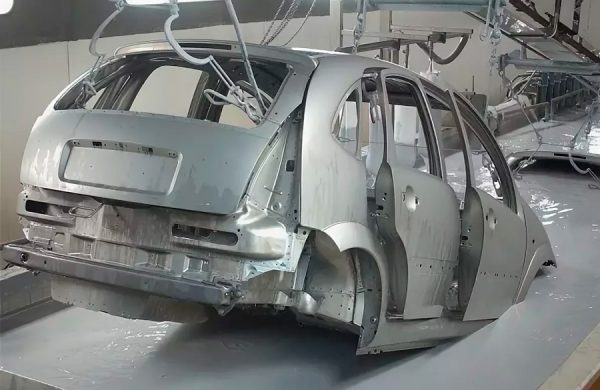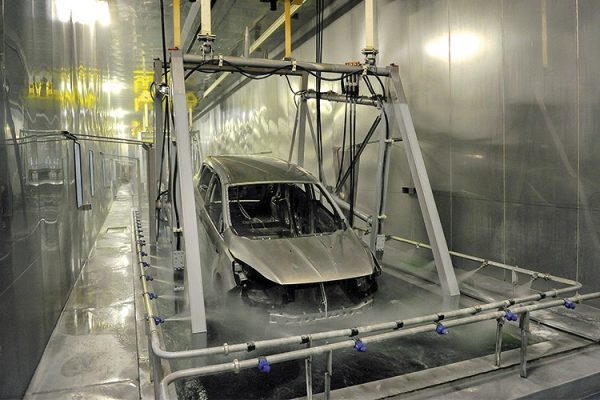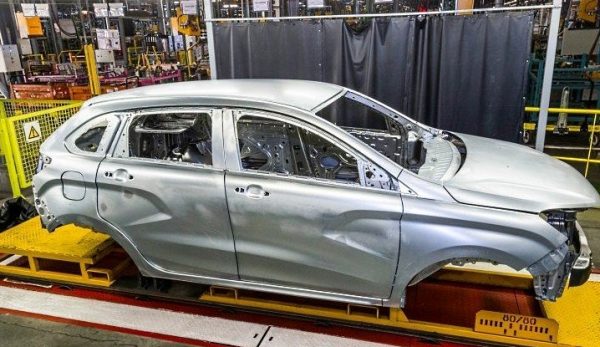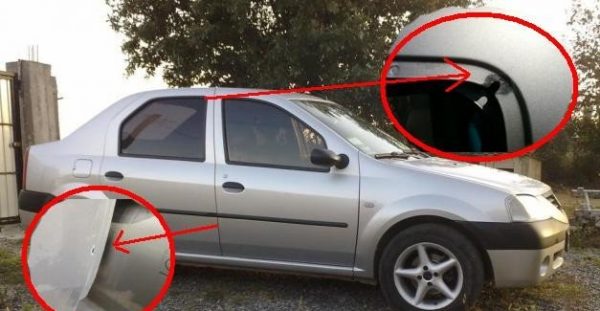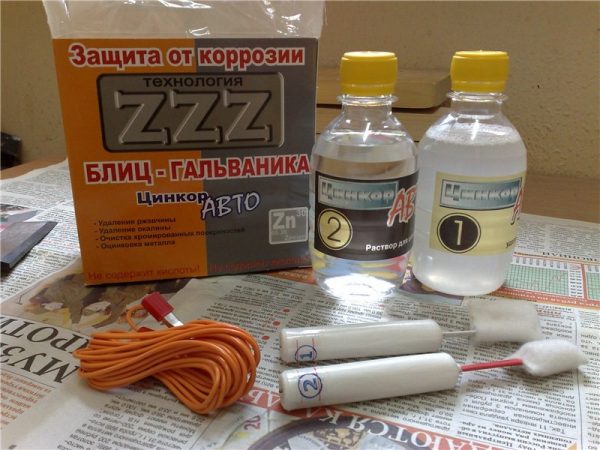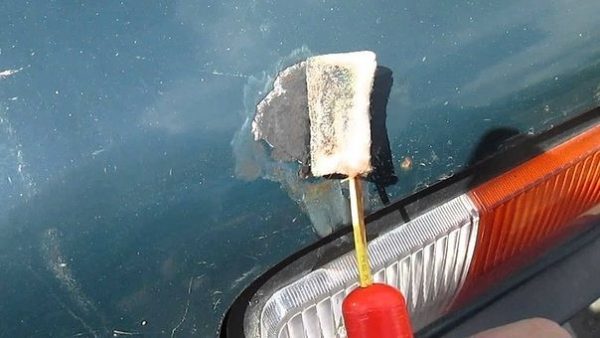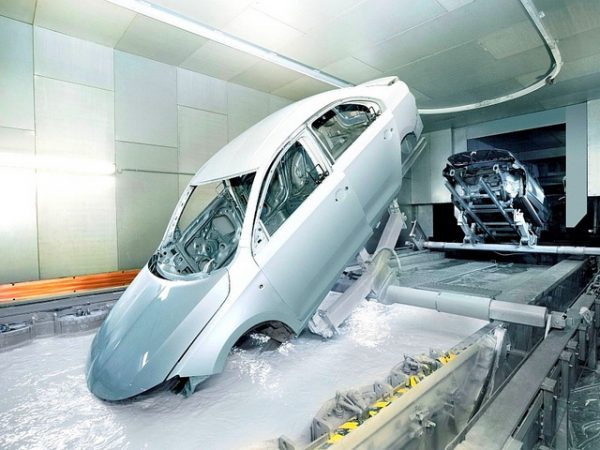Not everyone can afford to regularly change cars, so it’s worth carefully monitoring the condition of the car, and it will serve faithfully for much longer. 90% of the reliability of the car depends on the body, so many experienced car owners prefer to process its surface with zinc.
- The benefits of galvanizing the machine body
- Types of galvanizing
- Hot dip galvanized cars
- Galvanized Type Machines
- Auto domestic production
- Whether or not galvanizing - how to find out in practice
- Self-galvanizing of the body
- Preparatory work
- Galvanizing process
- The method of galvanizing using "white powder"
- The main stages of work
- Metal activation
- Galvanizing a car body with a battery in a garage

Galvanizing the car body reduces the risk of corrosion and damage to parts from the action of adverse factors, which extends their service life.
The benefits of galvanizing the machine body
Despite the presence of factory protective coatings on the car body, road dirt, salts, reagents, constant temperature changes and humidity cause damage to parts. Galvanizing, or galvanizing, helps to stop or prevent metal corrosion that occurs during prolonged use of the machine in difficult conditions.
Body galvanizing is the process of coating a metal with a layer of zinc in order to protect it from rust. Typically, metal is applied to the underbody, wheel arches and some other vulnerable areas of the machine. As a result of manipulations, a galvanic pair is created, where zinc is a more active metal and a strong film is obtained on the surface of iron. Galvanizing a car allows you to create a reliable anode protection, "saving" the body from physical and chemical damage. Even with scratching, the zinc layer will suffer first, and the iron will remain untouched.
to contents ↑Types of galvanizing
There are different types of galvanizing of metal:
- Galvanic. Zinc from a zinc-containing electrolyte is deposited on the surface of the body during electrochemical processes.
- Hot (thermal). The machine body is lowered into the zinc melt. Also, zinc can be applied to a metal sheet, which is then rolled, or sprayed from a special gun (shoping). The hot method is considered the most expensive, but the most effective type of galvanizing.
- Cold. Most often used at home, as it is simple to carry out. It involves applying zinc to a metal surface in a manner similar to staining with ordinary polymer paints.
- Diffuse. Zinc powder is used to process (sherardise) parts at a temperature of + 290 ... + 450 degrees or immerse them in zinc vapor at + 800 ... + 900 degrees.
According to the completeness of processing, galvanizing is classified into full, partial or nodal. In the latter case, the deposition of metal is carried out only on individual nodes and compounds. When buying a new machine, the type of galvanization carried out can be clarified in the attached documents, which also indicate the thickness of the created coating and the warranty period of its service. Professionals even without documents know which models of machines are galvanized in the factory and how exactly metal is applied to body parts.
to contents ↑Hot dip galvanized cars
Initially, this type began to be used at Volkswagen and Audi factories, with the Audi A80 being the first galvanized production model. Further, Porsche, Volvo and other automakers began to process the car bodies in a hot way. Due to the high cost of hot-dip galvanizing technology, it is used for premium machines. Of the inexpensive models that have received such reliable protection, you can specify:
- Chevrolet Lacetti;
- Chevrolet Epica;
- Opel Astra;
- Opel Vectra;
- Ford - Sierra, Mondeo, Escort;
- Fiat Albea;
- Fiat Marea.
to contents ↑During processing, a durable coating with a thickness of 2–10 μm is created (depending on the model and the specific manufacturing company), which protects the body from rust.
Galvanized Type Machines
The cost of galvanized machines is much lower than with the hot dip galvanizing method. This coating method is used by Japanese, European, American manufacturers. Since protection will be worse, leading car companies have introduced some improvements. Here are the main ones:
- the thickness of the zinc layer is 9-15 microns;
- the use of high alloy steel without impurities;
- a durable layer of specially selected primer and paint.
Among the cars that were galvanized by this method, we can name some models of Honda, BMW, Mercedes, Alfa Romeo, as well as:
- Skoda Octavia;
- Skoda Fabia;
- Renault Logan;
- Renault Espace 3;
- most of Toyota's lineup;
- Chrysler 300M;
- Mitsubishi Lancer
Auto domestic production
AvtoVAZ products at one time were prepared from foreign steel, which had already been galvanized. Due to the too high cost of imported material, the company switched to domestic steel, and the bodies began to be galvanized in a cold way, giving a low degree of protection. In Russian cars, not the entire body is galvanized, but only individual parts and assemblies. Some compounds are treated by cataphoresis without zinc.
Among the Russian cars can be called:
- VAZ 2110 (approximately 50% of the details);
- Lada 4x4 (cataphoretic priming without galvanizing);
- the first generation of Kalina (up to 52% of details);
- the second generation of Kalina (galvanizing the entire body, except for the hood, roof, side members);
- "Lada Priora" (100% of the body in modern models);
- “Lada Granta” (hatchback - galvanizing of wings, doors, sedan - no galvanizing);
- Lada Vesta (full galvanization, excluding thresholds);
- "Lada XRAY" (full galvanization, except for the roof).
to contents ↑Since the protection created by cold galvanizing is not 100% reliable, during prolonged use it is broken and the metal begins to rust. With adverse effects, such a process can begin within a few years of driving a new car.
Whether or not galvanizing - how to find out in practice
Before galvanizing a car with your own hands, it is advisable to determine whether the procedure was done initially. If information about the new car can be found in the documents (although not always), then with a used car the situation is much more complicated.
If you have documents that indicate the technical characteristics of the machine, you should carefully read all the information. In the absence of the words “galvanizing”, “galvanizing”, we can confidently say that metal processing was not performed. Only the expression "full galvanization" means the presence of high-quality corrosion protection. Most manufacturers of economy-class machines use partial galvanizing, so many body parts still remain susceptible to rust.
It is impossible to determine whether galvanizing has been performed. You will have to go to a specialized center, because in simple car repair shops such a technique is not practiced due to the high cost and complexity. The cost of research is high, so it is not always advisable. It is better to look for information on galvanizing a particular model on the Internet, although you cannot be 100% sure.
to contents ↑Self-galvanizing of the body
Rust removal using galvanizing and body protection can also be carried out in garage conditions.Of course, the quality of the created zinc film will be worse than that of the factory one, but the metal will still last an order of magnitude longer and will not suffer from rapid corrosion. A similar procedure can be carried out to protect other metal products in everyday life.
Preparatory work
The procedure involves the use of phosphoric acid with dissolved zinc. To work, you need to stock up with a salt battery or several batteries (depending on volume). To handle a large area, you should buy the largest batteries, print them, remove the entire braid. The inner contents can be left (carbon black, graphite rod), although they are not required.
On the case of each cleaned battery, a cotton circle should be fixed, and on the reverse side, a power cable connected to the car battery. The easiest way is to attach the wire and cotton with the help of clerical gum. You should also prepare the metal product to be processed - clean from dirt, rust, degrease, dry.
to contents ↑
Galvanizing process
First you need to connect the minus and plus of the battery to the components of the galvanizing process. The negative terminal is connected to the desired part of the body, and the positive terminal is connected through the wire to the battery. Further, the order of work will be as follows:
- type acid with dissolved zinc into a syringe (or a ready-made product, for example, “Zincar”);
- impregnate a cotton pad on the battery case with acid;
- start the system, periodically moving the nozzle over the cultivated area, but always without stopping (otherwise the layer will not be uniform).
to contents ↑You can find on sale kits for galvanizing, which already includes all the necessary tools and accessories, and the finished compound plays the role of acid with zinc powder.
The method of galvanizing using "white powder"
For more efficient metal processing with zinc, soldering is used instead of phosphoric acid. This is hydrochloric acid diluted with water with zinc dissolved in it. According to the masters, galvanizing with such a composition lasts longer and penetrates deeper into the metal surface. Soldering acid is sold in small electronics stores in radio stores. It can also be made by diluting zinc chloride - a white powder, which is sold by weight.
to contents ↑The main stages of work
In the beginning, it is necessary to pour zinc chloride into a strong dish, pour distilled water to obtain a clear liquid. About 2.5 liters are needed per kilogram of funds. In the finished soldering acid, you can put the whole part, creating a galvanic bath. Before starting work, you should clean the product from rust with an emery cloth or grinder, and then activate the metal - remove the oxide film from its surface.
to contents ↑Metal activation
The positive terminal of the battery during activation is connected to the part, the negative - through a 20-watt bulb to the electrode (an iron bolt wrapped in a cotton cloth and moistened with soldering acid). As current is applied, the product will be cleaned of oxide film. Only after its removal is the metal immersed in a plating bath and galvanized in the same way.
Galvanizing a car body with a battery in a garage
Self-galvanizing with a salt battery according to the technology described above is popular among drivers. Usually it is made for the bottom, wheel arches, which deteriorate from rust faster than other elements of the body. A battery with wetted soldering acid is used to drive cotton wool over the metal, tightly pressing it to the surface. The result is a silver film.
Upon completion of work, acid residues must be neutralized by washing the parts in a solution of baking soda. This will reduce the risk of corrosion and enhance the protection created, extending the life of the machine.

